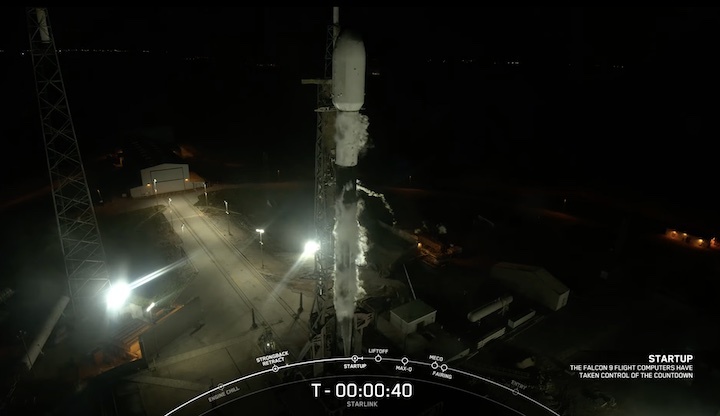17.07.2023

For the second time this week, SpaceX pushed the envelope by flying a Falcon 9 rocket for a 16th time. Booster 1060 lifted off from Cape Canaveral’s pad 40 at 11:50 p.m. EDT (0350 UTC) Saturday carrying 54 Starlink satellites into orbit. Just last Sunday, Booster 1058 launched 22 second-generation Starlink satellites, becoming the first Falcon 9 rocket to make a 16th flight. Previously, the reusable Falcon 9 first stage booster had only been certified for 15 missions.
The first-stage booster appeared to successfully land on the drone ship ‘A Short Fall of Gravitas’ in the Atlantic Ocean about eight and a half minutes after launch.
It was the second launch attempt for this mission after a scrub during the final minute of the countdown early Friday morning. SpaceX said Saturday that the hold was caused by elevated oxygen levels in one of the nine Merlin engines on the first stage. The company pushed back the next launch attempt by a day and conducted a static test fire early Saturday morning to clear the rocket for flight. During the test firing the Falcon 9’s nine Merlin engines ignited at 12:50 a.m. EDT (0450 UTC) and fired for about ten seconds while the rocket was held down on the launch pad.
The Falcon 9 first stage booster, tail number 1060, previously launched GPS III-3, Turksat 5A, Transporter-2, Intelsat G-33/G-34, Transporter-6, and 10 Starlink missions. It will be only the second booster to have flown 16 times, following close of the heels of Booster 1058’s launch of 22 second-generation Starlink satellites. It is only the second booster to have flown 16 times, following close of the heels of Booster 1058’s July 9 launch of 22 second-generation Starlink satellites.
This mission, designated Starlink 5-15 lofted the last 54 older-generation Starlink V1.5 satellites. The spacecraft, each weighing about 660 pounds (300 kg). Earlier this year SpaceX started placing a new generation of Starlink satellites in orbit, known as Starlink V2 Minis, which are larger and offer four times the broadband capacity of the older-design satellites.
The Starlink network provides high-speed, low-latency connectivity to customers around the world. SpaceX says each Starlink launch adds more than a terabit per second of capacity to the constellation.
Prior to this launch, SpaceX had 4397 functioning Starlink satellites in space, according to a tabulation by Jonathan McDowell, an expert tracker of spaceflight activity and an astronomer at the Harvard-Smithsonian Center for Astrophysics.
The first-stage booster will land on the drone ship ‘A Short Fall of Gravitas’ in the Atlantic Ocean about eight and a half minutes after launch.
Quelle: SN

